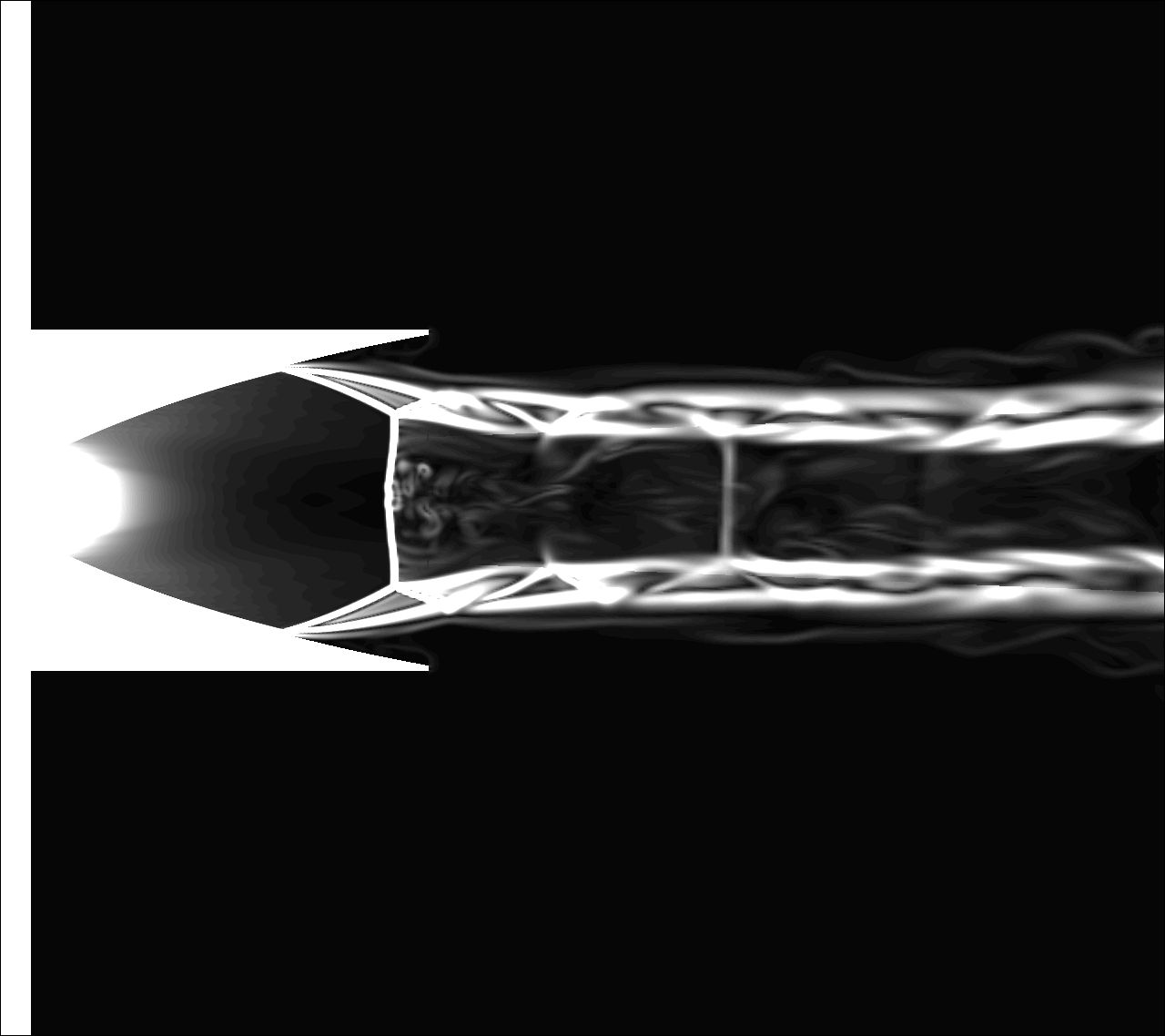High-Speed Nozzle Flow
Convergent-Divergent Space Nozzle
In a project starting January 2012 funded by the Swedish National Space Board, the G3D::Flow code has been used for the simulation of the flow in a rocket nozzle for operating conditions leading to separated flow. The G3D::Flow compressible solver has been used in conjunction with external tools based on Arnoldis eigenmode extraction technique and Dynamic Mode Decomposition (DMD) in order to extract and analyze the modal behavior of the internal and external flow. Furthermore, the DES models implemented in G3D::Flow has been used for the simulation of nozzle start-up transients.
Modal analysis of separated nozzle flow

Rocket nozzle start-up transient
Convergent-Divergent Supersonic Circular Nozzle
The above-mentioned DMD and Arnoldi techniques have been used for the identification of a screech mode in the flow downstream of a convergent-divergent nozzle. The work was done by Chalmers using G3D::Flow in a collaboration project including the partners Chalmers University of Technology, The Royal Institute of Technology, GKN Aerospace, and University of Cincinnati sponsored by the Swedish Defence Material Administration (FMV). The figure demonstrates the capability of the Arnoldi eigenvalue method to identify helical screech mode in a supersonic jet. The top half of the figure shows the pressure field of the mode predicted by the Arnoldi method compared to the actual screech mode shown on the figure´s lower half. The actual screech mode pressure field was isolated using the Dynamic Mode Decomposition (DMD) algorithm applied to a set of snapshot data from a Large Eddy Simulation (LES). The LES of the jet produced a high frequency screech and has been validated against experimental measurements. What is important to keep in mind is that the computational cost of the Arnoldi procedure is only a fraction of the cost of the LES.

Other Compressible Flow Stories